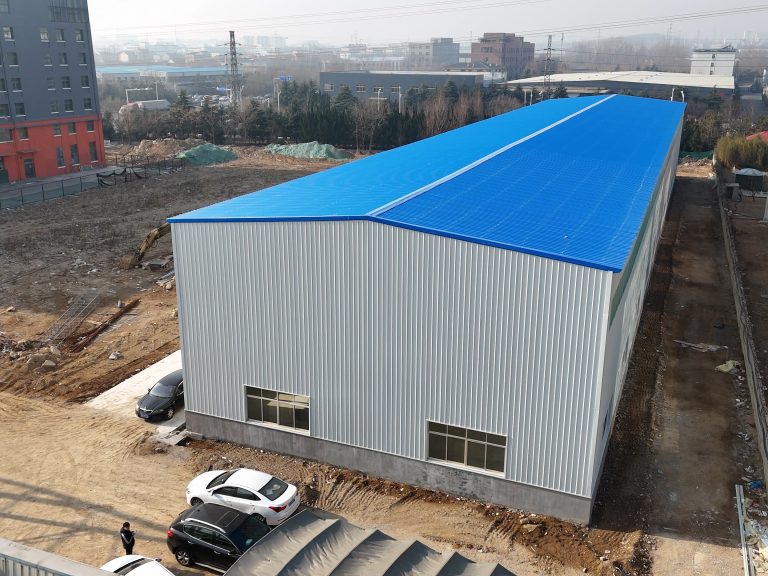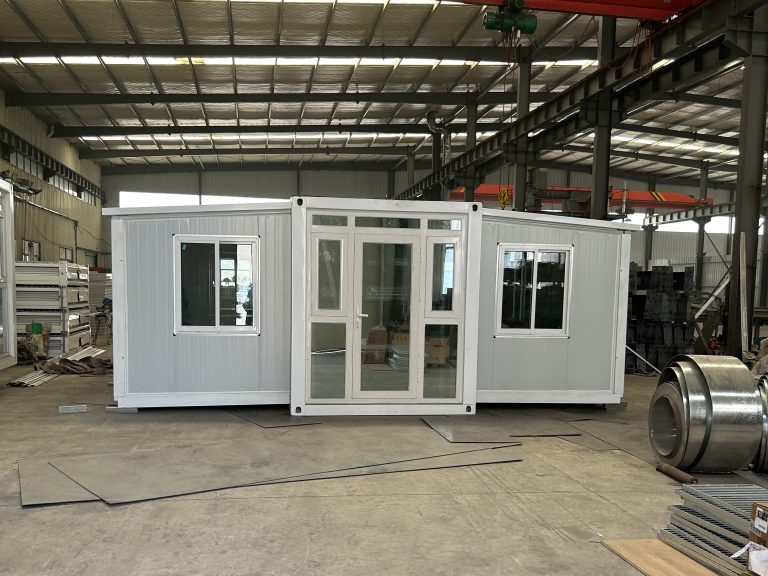Table of Contents
Benefits of Using Steel Structure in Prefabricated Buildings
Steel structures have long been a popular choice for construction due to their durability, strength, and versatility. In recent years, there has been a growing trend towards using steel structures in prefabricated buildings. This innovative application of steel in prefabricated construction offers a wide range of benefits that make it an attractive option for builders and developers.
One of the key advantages of using steel structures in prefabricated buildings is the speed of construction. Prefabricated buildings are constructed off-site in a controlled environment, allowing for faster assembly on-site. Steel structures are lightweight and easy to transport, making them ideal for prefabricated construction. This can significantly reduce construction time and labor costs, making it a cost-effective option for builders.

In addition to speed, steel structures also offer superior strength and durability. Steel is a highly resilient material that can withstand extreme weather conditions, seismic activity, and other environmental factors. This makes steel structures an excellent choice for prefabricated buildings that need to be durable and long-lasting. Steel structures also have a high strength-to-weight ratio, allowing for larger open spaces and flexible design options.
Another benefit of using steel structures in prefabricated buildings is their sustainability. Steel is a recyclable material that can be reused and repurposed, making it an environmentally friendly choice for construction. Prefabricated buildings also generate less waste during construction, further reducing their environmental impact. This makes steel structures a sustainable option for builders looking to reduce their carbon footprint and meet green building standards.
Steel structures are also highly customizable, allowing for a wide range of design options. Prefabricated buildings can be tailored to meet specific requirements and design preferences, making them a versatile choice for a variety of applications. Steel structures can be easily modified and expanded, allowing for future growth and flexibility. This makes prefabricated buildings with steel structures a practical choice for businesses, schools, and other organizations that may need to adapt to changing needs over time.
In conclusion, the innovative application of steel structures in prefabricated buildings offers a wide range of benefits that make it an attractive option for builders and developers. From speed and durability to sustainability and flexibility, steel structures provide a cost-effective and versatile solution for a variety of construction projects. As the demand for efficient and sustainable building solutions continues to grow, steel structures in prefabricated buildings are likely to become an increasingly popular choice in the construction industry.
Design and Construction Techniques for Steel Structure Prefabricated Buildings
Steel structures have long been a popular choice for construction due to their durability, strength, and versatility. In recent years, there has been a growing trend towards the use of steel structures in prefabricated buildings. This innovative application of steel structure in prefabricated buildings offers numerous benefits, including cost savings, faster construction times, and increased sustainability.
One of the key advantages of using steel structures in prefabricated buildings is the ability to fabricate components off-site in a controlled environment. This allows for greater precision and quality control, resulting in a higher quality finished product. Additionally, prefabrication reduces construction time significantly, as components can be manufactured simultaneously while site preparation is underway. This can lead to substantial cost savings, as labor and material costs are minimized.
Furthermore, the use of steel structures in prefabricated buildings can also have environmental benefits. Steel is a highly recyclable material, with a high scrap value. This means that steel components can be easily recycled at the end of a building’s life cycle, reducing waste and minimizing environmental impact. Additionally, the energy efficiency of steel structures can help to reduce a building’s carbon footprint, making it a more sustainable choice for construction.
Innovations in steel structure design have also contributed to the increased use of steel in prefabricated buildings. Advanced computer modeling and simulation techniques allow for more efficient and cost-effective designs, resulting in lighter and stronger structures. This not only reduces material costs but also allows for greater flexibility in design, enabling architects and engineers to create unique and innovative buildings.
Another key advantage of using steel structures in prefabricated buildings is their ability to withstand extreme weather conditions. Steel is a highly durable material that is resistant to corrosion, fire, and pests. This makes it an ideal choice for buildings in areas prone to hurricanes, earthquakes, or other natural disasters. Additionally, steel structures can be easily modified or expanded, making them a flexible and long-lasting solution for a variety of building types.
The use of steel structures in prefabricated buildings is not without its challenges, however. One of the main concerns is the potential for thermal bridging, where heat is transferred through the steel components, reducing the building’s energy efficiency. To address this issue, designers can use thermal breaks or insulation to minimize heat transfer and improve the building’s overall performance.
Despite these challenges, the benefits of using steel structures in prefabricated buildings far outweigh the drawbacks. From cost savings and faster construction times to increased sustainability and durability, steel structures offer a wide range of advantages for modern construction projects. As technology continues to advance and new innovations in steel structure design emerge, we can expect to see even more creative and efficient uses of steel in prefabricated buildings in the future.
In conclusion, the innovative application of steel structures in prefabricated buildings represents a significant advancement in modern construction techniques. With their durability, strength, and sustainability, steel structures offer a versatile and cost-effective solution for a wide range of building types. As the construction industry continues to evolve, we can expect to see even more exciting developments in the use of steel structures in prefabricated buildings.





